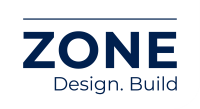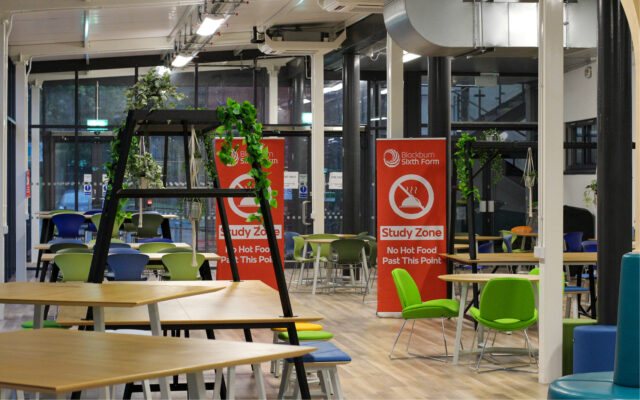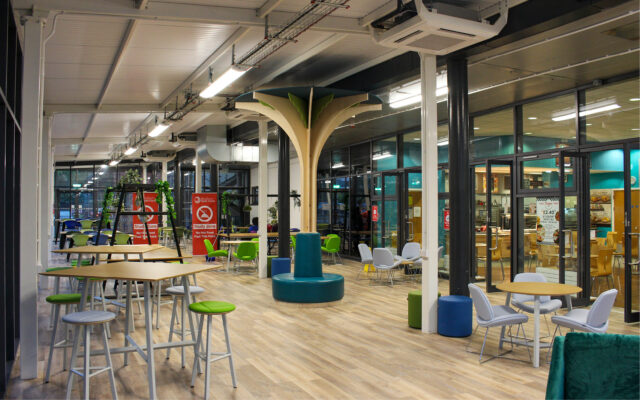Traditional construction projects can feel lengthy at best and infuriatingly slow at worst, with unpredictable delays and countless moving parts to be co-ordinated. Once the backdrop of a busy, working school is added into the mix, much needed school building work can quickly become completely overwhelming. This leaves schools struggling with space and facilities that are not fit for purpose, thanks to the issues that can come with the traditional construction process.
A National Audit Office report found that some 700,000 children are learning in environments that require refurbishment. What’s more, in their ‘Better Spaces for Learning’ report, RIBA explains that British schools are facing a perfect storm: the worst shortage of school places in decades is putting increasing pressure on school buildings. With the problem forecast to get significantly worse it adds to the ongoing challenge of dealing with a school estate that is outdated and in many cases crumbling. Schools desperately need expanding, repairing or replacing in parts.
Tired of the issues related to the traditional construction model, and the challenges this presents in a school, education providers are turning to integrated design-build solutions instead to reduce complexity and accelerate outcomes.
What’s the difference between traditional and design-build and why does it matter?
Structure and procurement
Traditional build:
In a traditional build, the school appoints an architect first. Once designs are finalised, the project goes out to tender for a contractor. This sequential process can be drawn out and leaves the school juggling multiple consultants and contacts. If communication is weak, wait times can go from days, to weeks, to months and the much needed end goal; space for learning, becomes further away. What’s more, the scoping, design and specification phase incur large upfront costings which still do not guarantee final project build costs.
Design-build:
Design-build takes a different approach. One team is responsible for everything, from early design work and planning to the final fit-out. It’s a single procurement, a single contract and one point of contact from start to finish which allows schools to liaise with one responsible and accountable body.
Time and delivery
Traditional build:
Traditional construction tends to follow a linear process with each phase needing to be completed before the next begins, which can lead to delays, especially when weather or site conditions intervene. This is especially problematic in educational settings where often, construction timeframes must be adhered to by the day, so as to reduce disruption to school life. When multiple contractors are involved and delays mount, schools are left feeling powerless; often left with areas of their site which are unsafe or completely out of use during the interim.
Design-build:
Design-build allows for design, manufacturing and site preparation to happen in parallel. This allows for projects to be completed faster, often within school holidays or tight term-time windows.
Budget and risk
Traditional build:
Cost overruns and change orders are a common frustration with traditional builds, especially when unforeseen issues arise on site. Working across multiple different parties can even lead to lengthy disputes over accountability.
Design-build:
With design-build, costs are set earlier and accountability is increased through working solely with one design-build team. This clarity helps avoid surprises, with the added benefit of better coordination between what’s drawn and what’s delivered.

Communication and control
Traditional build:
Traditional builds often involve a chain of communication between architects, project managers, contractors and consultants. All of this increases the risk of ‘crossed wires’ or lost knowledge, leading to decision-making delays which can add whole terms worth of delay and disruption to school projects as well as increasing project costs.
Design-build:
Design-build simplifies things; with one team in charge, communication is more direct, decisions are quicker and schools spend less time chasing updates or resolving conflicts between suppliers.
Impact on the school community
Traditional build:
Perhaps most importantly, the choice of delivery method has a direct impact on staff and students. Traditional construction often takes longer, involves more disruption and can create safety and access challenges during term time.
Design-build:
Design-build projects are quicker, quieter and cleaner, making them far easier to complete out of term time or manage alongside daily school operations. Manufacturing the key parts of the envelope system helps reduce on-site build time, minimising disruption.
ZONE Design.Build
Delivering your next education project is dependent on how the works are completed. At ZONE Design.Build, we use a fully integrated design and build process to help schools and colleges create high quality learning spaces and exciting educational environments. We equip schools with the space they so need, in a faster and more cost-effective model than traditional construction allows.
For schools whose priorities include rapid delivery, minimal disruption to learning and total control over cost, ZONE offers a smarter alternative. Our approach streamlines planning, design, and installation into a single process, cutting out delays, reducing risk and delivering outstanding value per square metre.
Working in partnership with some of the UK’s largest Multi-Academy Trusts, our expert team provides tailored solutions that meet the unique demands of the education sector. From early-stage design concepts through to fully installed facilities, we’re trusted by education leaders to deliver first-class results, on time and on budget. ZONE is where innovative thinking meets proven delivery and it’s helping schools rethink what’s possible.
Explore our approach at: zonedesignbuild.co.uk
View all News Articles here.



